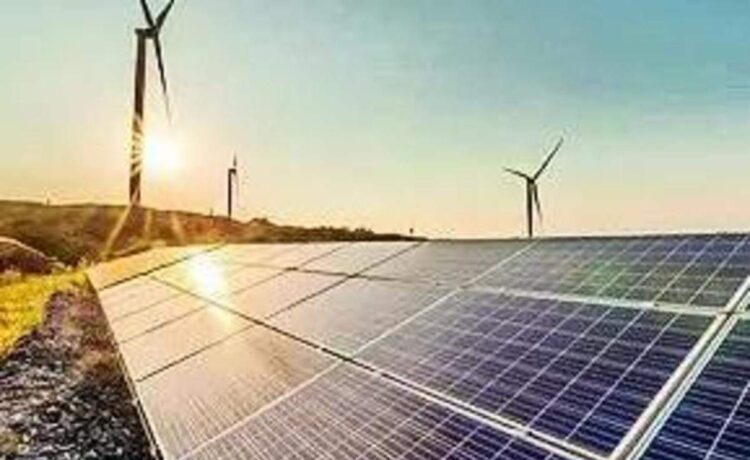India’s Power Sector has gone through an extraordinary transformation over the last decade – achieving ~100% electricity access (for all willing households) and an unprecedented acceleration in Renewable Energy (RE) capacity addition being the major highlights of the success story.
Energy transition and modernisation of utilities are the major themes in the electricity sector worldwide. In the upcoming budget, the Government is likely to continue on the thrust built in these areas over the last decade while also encouraging the next wave of interventions.
Developing low-carbon assets for future is important, however, scaling the decarbonisation of existing infrastructure, especially in transport, buildings, and industries also needs to be prioritised. A budgetary allocation towards pilot project for creating a Carbon Capture and Storage (CCS) demonstration projects for hard to abate industries would be welcome.
continued below
Rising Electric Vehicles (EV) sales in the country is an encouraging trend. Continuation and furthering of the momentum created through Faster Adoption & Manufacturing of (hybrid &) Electrical Vehicles (FAME) will be helpful.
Revamped Distribution Sector Scheme (RDSS) is already accelerating Smart Meter adoption and investments towards loss reduction. However, much of our T&D infrastructure is not designed to handle the sharp rise in frequency and magnitude of extreme weather events being witnessed in the recent times. Also, there is an increase in instances of downstream distribution network overloading during summer peak hours due to the unprecedented rise in peak demand over the last two years. Network strengthening to address these issues could be the focus of future capital investment schemes for DISCOMs supported by government of India.
In the last decade, India has successfully led a solar capacity addition program. In FY24, the country witnessed a record addition of 18 GW solar capacity. However, the pace of RE capacity addition needs to treble for achieving the 500 GW target by 2030 set by the Government. In addition to the existing mechanisms put in place, the next phase of growth in RE capacity additions will require 1) Enhanced focus on Corporate RE procurement with effective implementation of Green Open Access regime through favorable charges and Virtual Power Purchase Agreements (VPPA); 2) Continued support to RE manufacturing with integrated ecosystem; 3) Dedicated programs to promote New Innovative Solar applications; 4) Implementation of Distributed RE Obligation and adoption of differentiated tariff framework to promote Distributed RE.
An allocation towards skill development (and creating micro entrepreneurs in rural areas) will help the growing clean energy sector in the coming years, particularly in the areas like Roof-top Solar, Battery Energy Storage Systems (BESS), EV Charging Stations etc.
Bringing electricity under the ambit of GST regime can remove current cascading effect of taxes and make input taxes in the entire value chain creditable thereby improving tax efficiency in the sector.
New manufacturing units commencing manufacturing by 31-Mar-2024, enjoy concessional corporate tax rate of 15%. This initiative has been instrumental in attracting investments in manufacturing sector in the country, including those towards solar PV modules, electrolysers, batteries etc. Extending the sunset date beyond 31-Mar-2024 by an additional five years or so will undoubtedly contribute to India’s economic growth.
The Government may consider providing concessional tax rate on sale of all carbon credits and Renewable Energy Credits (RECs). At present, the Income Tax Act provides concessional tax rate under section 115BBG in relation to sale of carbon credits validated by the UNFCC and, not to VERs, RECs, etc.
To assist in funding some of the initiatives discussed above, the Government may also look to standardise and adopt new frameworks of Green Financing. Tax incentives for Green Bonds can help bring down the cost of green financing and encourage investments in energy transition initiatives. Interest income earned by investors in Green Bonds or profits earned by sale/ transfer of Green Bonds may be treated as tax exempt in the hands of the investors. Further the definition of “Green Bonds” for the purpose of granting such income-tax benefits, may be aligned with the regulatory prescription issued by SEBI.
Tax incentives may be provided for promoting Green Hydrogen. Supply of electricity by a solar / wind power plant to a Green Hydrogen unit may be considered as deemed export, so that the solar / wind power plant is eligible to claim refund of input GST which then doesn’t become a cost for Green Hydrogen unit. Alternatively, GST refund may be provided in such cases. Secondly, Customs Duty may be reduced on solar panels imported for setting up power plants to supply electricity exclusively to Green Hydrogen units.
As per CEA’s Draft Distribution Perspective Plan 2030, investment of Rs. 7.42 Lakh crores is required from 2022 to 2030 in power distribution sector. Innovative financing mechanisms like asset monetisation will be required to raise the requisite funds for new infrastructure investments in the sector.
Most Read in Renewable
Join the community of 2M+ industry professionals
Subscribe to our newsletter to get latest insights & analysis.
Download ETEnergyworld App
- Get Realtime updates
- Save your favourite articles

















